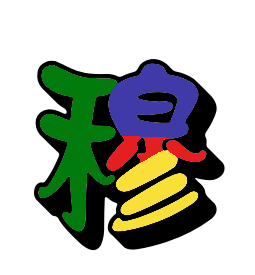 We all have some characters that just refuse to stick and that we keep forgetting over and over. The best way of learning tricky characters in Chinese is to deal with them decisively. For more about how to do that, check the first article in this series.
We all have some characters that just refuse to stick and that we keep forgetting over and over. The best way of learning tricky characters in Chinese is to deal with them decisively. For more about how to do that, check the first article in this series.The most difficult Chinese characters
In this article, I will go through some of the most difficult characters. This difficulty is not based on my opinion, it’s based on statistics fetched from our database. We know which characters Skritter users get wrong most often.
For each character, I will explain:
- Character frequency and basic definition
- Pronunciation
- Character composition and formation
- The component parts and their functions
- Common words and/or phrases for context
- Why the character might be difficult
Previous articles:
10. 御/禦 (yù) “to defend; imperial; to drive a chariot” (frequency rank: ~1900)
First, it should be mentioned that the simplified character is mapped to two traditional characters: 御 and 禦, the first meaning “imperial” (among other things) and the second meaning “to defend”. The mapping is not 100% clean, though, because the meanings overlap in traditional Chinese in some cases.
The character is a combined ideogram, showing a person riding in a horse-drawn chariot. This is not really helpful for remembering the modern form, though. The character can be broken down into 彳 “step” and 卸 “to unload”.
Some very common words including this character are:
- 抵御 (dǐyù) “to resist; to withstand”
- 防御(fángyù)) “to defend; defense”
This character is probably difficult (I find it difficult to remember myself) because it’s combined of components that aren’t really used on their own much. If you know 卸 it’s of course easy to remember this character too, but if you don’t, you’re stuck with a bunch of strokes that don’t mean much to you. Things that don’t mean anything are the hardest to learn! The best solution is to make sure you learn 卸 first, because it’s a useful character in itself. Here’s a hint: it consists of “pestle” 午, “stop” 止 and “kneel” 卩.
Practise writing the character using the scratchpad!
11. 皱/皺 (zhòu) “wrinkle” (frequency rank: ~1900)
This is a left-right compound. In the simplified character, the left part is 刍, which isn’t really used on it’s own much, but means “to mow (grass, hay etc.)”. This is actually the phonetic component too, but it’s read chú, which might be a little bit far from zhòu to offer much help. The traditional version of 刍 is
芻.
The right part is more obviously related to the meaning. 皮 means “skin”, which is one of the first things we might think about when we hear the word “wrinkle” in English too.
皱 is part of some common words:
- 皱纹/皺紋 (zhòuwén) “wrinkle”
- 皱眉/ (zhòuméi) “frown; knit one’s brow”
To be honest, I’m not sure why this character is difficult, at least not for simplified Chinese. I kept mixing up this character with 縐 for a long time, but most students don’t really need that because 縐 is much, much rarer (beyond 4000), so by the time you get there, you should already know 皱. Help me out! Why is 皱 hard to learn?
Practise writing the character using the scratchpad!
12. 穆 (mù) “solemn; reverent” (frequency rank: ~1900)
This character is intimidating if you learn simplified Chinese because you simply aren’t used to having to write this many strokes! 16 of them! Learn the parts well first, then you only need to remember how to combine them, which is much easier. Here they are:
- 禾 – grain (should be familiar to most already)
- 白 – white (also easy)
- 小 – small (even easier)
- 彡 – hair (admittedly not super easy)
Not that bad? If you want to learn this character, you probably know all the component except perhaps the last one. You only need to combine them. I used a fairly simple image to learn this character years ago and it has stuck for some reason. I picture a solemn rite or ceremony where three small stalks of grain are carved into an altar and coloured white by chalk, forming 彡.
穆 is not that common in normal words, but it’s part of many names (and some normal words, of course):
- 穆斯林 (mùsīlín) – “Muslim”
- 肃穆/肅穆 (sùmù) – “solemn and respectful”
Practise writing the character using the scratchpad!
—
That’s it for today! Do you find these characters difficult? Have you developed good mnemonics for than? Or do you have a question? Leave a comment!
